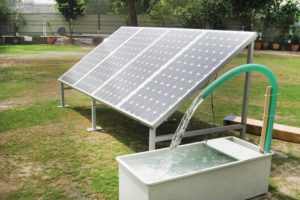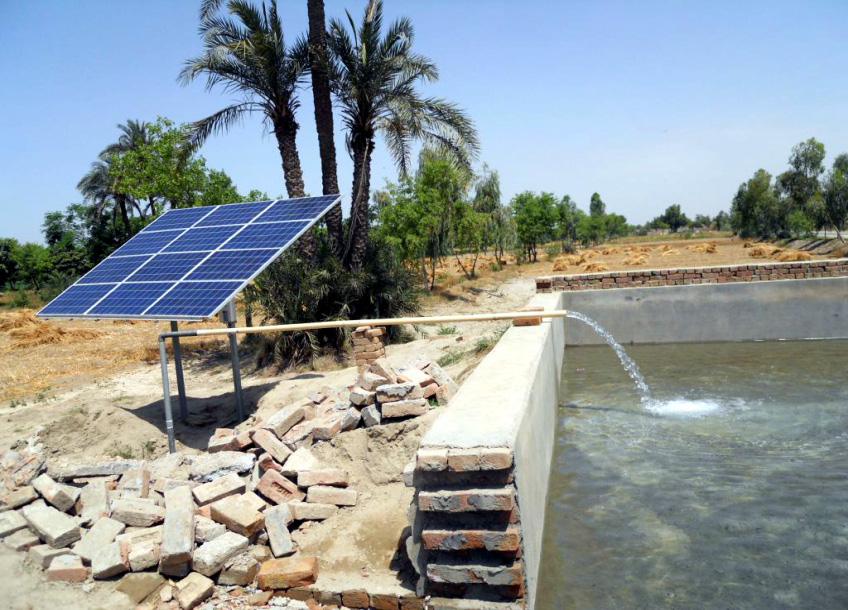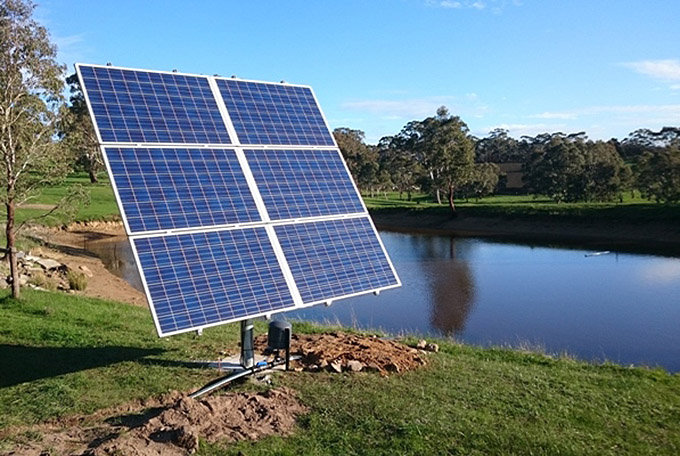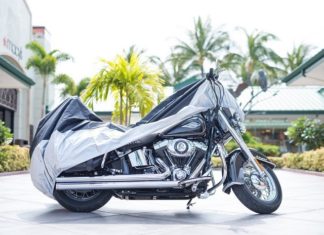
Getting a clean and reliable water supply in remote areas can be hard without the right equipment. Solar pumps can accomplish just that, especially if the area where the water supply is needed is out of reach of power lines. Moreover, solar pumps don’t rely on human nor animal power, or on diesel engines. In fact, solar pumps can completely replace our current pump systems and that will result in great socio-economic and climate benefits.

The water from solar water pumps can be used for a wide array of tasks, including water for livestock, crops irrigation and the providing of portable drinking water. Essentially, a solar water pump is an electrical pump which provides electricity by one or multiple PV panels. A solar water pump system usually consists of a solar panel array which powers an electric motor, which then powers a surface or bore pump. The water is usually pumped from a stream or ground into a storage tank that provides gravity feed.
You’ll find two basic types of solar pumps – centrifugal and positive displacement pumps. Centrifugal pumps use high speed rotation to suck in water though the middle of the pump. Most generic AC pumps use a centrifugal impeller, however, when operating at lower capacity the performance of the pump drops dramatically, which makes these pumps less suitable for solar applications, since the sun won’t shine consistently.

On the other hand, positive displacement pumps use a piston to transfer the water. Most solar pumps are positive displacement because of their consistency. These pumps bring water into the chamber then force it out with a helical screw or a piston. However, they generally pump water slightly slower than centrifugal pumps, but they can achieve higher lift.
Moreover, pumps are further separated into surface and submersible pumps. The pump ideal for you will depend on whether the water source is a bore or well, or a lake or river. Submersible pumps are placed underwater, in a well or bore water, for example, while surface pumps are place on top of the water or by the side. Submersible pumps are the more expensive option, but they’re better at suction and can draw water from more than 6-7 metres, while surface pumps can only push water over longer distance.
Regardless of which type of solar pump you opt to go for, you won’t need any fuel costs or spills for it. Additionally, they require low maintenance, are easy to install and are very reliable and simple to operate. You can make the system model and they can operate without any human interference.















